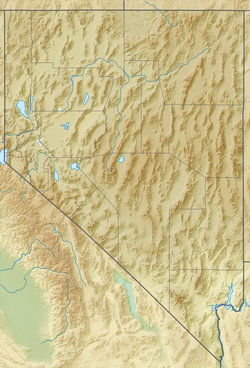| Lahontan Mountains | |
|---|---|
| Highest point | |
| Elevation | 1,284 m (4,213 ft) |
| Geography | |
| Country | United States |
| State | Nevada |
| District | Churchill County |
| Range coordinates | 39°24′20.711″N118°35′2.515″W / 39.40575306°N 118.58403194°W |
| Topo map | USGS Lahontan Mountains |
The Lahontan Mountains are a mountain range in Churchill County, Nevada. [1]
